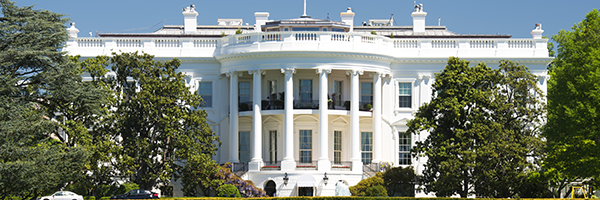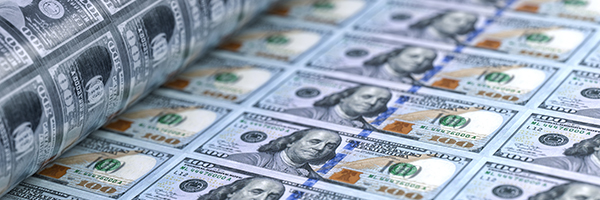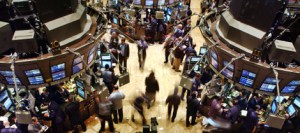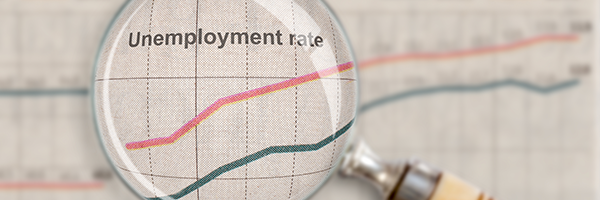 March 8, 2025
March 8, 2025
What You Need to Know Today:
Tariff trial ballon on how much and who will get hit?
Today the Washington Post reported that President-elect Donald Trump’s aides are exploring tariff plans that would amount to paring back–the Post’s characterization–the tariff plans that candidate Trump proposed on the campaign trail.
President-elect Trump immediately hit back on social media saying the Post story was made up and there were no such sources from his team.

CPI core inflation ticks upward; 25 basis point cut in November now consensus
Today, both the headline and the core CPI, which excludes food and energy, came in 0.1 percentage point higher than forecast for the month, with a month to month 0.2% increase in the headline index and a 0.3% rise for the core.On an annual basis, the headline index rose 2.4% in September, slightly less than the 2.5% in August. The core inflation rate, the more important number to the Federal Reserve, accelerated for the first time in one and a half years, to 3.3% from 3.2%. Weekly initial claims for unemployment also came out today, Thursday, October 10, and showed a much-bigger-than-expected increase of 258,000, against the median forecast for 230,000. Together the two reports almost cemented the odds of a 25 basis point cut in interest rates when the Fed meets on November 7.

Adding VMC as the third pick to my Special Report “10 new stock ideas for an old rally
Here’s what I wrote today when I added Vulcan Materials to my Special Report “10 new stock ideas for a old rally.”

Today I made my first 2 Harris picks in my Special Report on election stock winners
Today I added 2 Harris picks to my prior 3 Trump picks.

Of course, neither candidate is taking about the soaring budget deficit
The federal budget deficit swelled to $1.8 trillion in the fiscal year that ended in September, the Congressional Budget Office warned today, Tuesday, October 8. In the recently concluded fiscal 2024 year interest payments on the debt reached $950 billion, larger than the size of the Pentagon budget. As of Friday, the United States had accumulated a public debt of $35.7 trillion.
A perfect storm? War, oil, hurricanes, earnings, interest rates all worry stocks at once
It’s not surprising that stocks fell Monday, October 7. But it is surprising that they fell so little. The Standard & Poor’s 500 was off 0.96% on the day. The NASDAQ Composite dropped 1.18%. Wall Street’s favorite volatility gauge–the VIX–jumped to “just” a two-month high. Look at the negatives arrayed against stocks

Special Report: 10 Great Growth Stocks that Are Getting Greater–My first 8 picks
Here are the first 8 picks for my GREATER Growth Stocks Special Report. More on the way.
Live Market Report (20 minute delay)

My 10 Stocks for Your Core Portfolio–with the “whys” for each pick
I think a well-constructed portfolio should resemble an onion. (Yes, to continue the analogy, it may make you cry in the short term, but the end result after cooking time is yummy.) At the center of that onion is a core built of stocks with extremely high, risk-adjusted potential rates of return. These stocks won’t deliver the kind of huge gains you can reap from investing in a risky bet–if everything turns out right for that company and its stock. But neither are they likely to crash and burn because something goes wrong at the company. These core portfolio stocks will drop if the market as a whole heads south, but they will drop less and recover faster. These aren’t buy-and-forget, or hold-forever stocks. They can soar to unreasonable valuations at times and an active investor should take profits at some point of overvaluation. (I did a YouTube video recently (you can find it on any of my sites) on when to sell a very overvalued Nvidia, for example.) And they can trade at big discounts to fair value (which is, of course, when the steely-eyed among us will buy) because management has made a mistake or between the industry in which they do business is slumping, or because the market for the company’s goods and services has taken an unexpected direction. At that point, you’ll need to consider selling or adding to your positions depending on your analysis of how long the damage might last and how bad it is. But the point of this core to your stock portfolio is that these are companies that will deliver index-beating results with relatively small risks. Which will enable you, the investor, to plan how to achieve your financial goals with relatively less worry and uncertainty. So, without further ado, here’s my list of 10 stocks for a core portfolio–with the very important “whys” for each pick.

The Fed’ s political problem just about guarantees a pause to interest rate increases tomorrow
They call it the “headline CPI” for a reason. Today all the headlines I’ve seen tout the drop in headline inflation, the all-items Consumer Price Index, in May to an annual inflation rate of 4.0%. In April the annual inflation rate was 4.9%. The month-to-month rate dropped to an increase of 0.1% from April from 0.4% in April. This is undoubtedly good news on inflation. But, beyond the headline number, the inflation picture wasn’t nearly as rosy. The core CPI, which doesn’t include changes in the prices of food and energy, rose 0.4% in May from April. The annual core inflation rate was 5.3% in May. Economists had expected a 5.2% annual core inflation rate.

Saturday Night Quarterback says, For the week ahead expect…
This week brings potentially market-moving doses of news on inflation and interest rates. First up, inflation. On Tuesday, June 13, the market will get the report on CPI (Consumer Price Index) inflation for May. Economists project that, because of falling gasoline prices in the month, all-items headline CPI will show just a 0.2% increase in month-to-month inflation in May and just a 4.1% year-over-year inflation rate. That would be the lowest annual inflation rate since March 2021. The core rate, however, is expected to climb at an annual 5.3%. And then on Wednesday, the Fed meets on interest rates.

New claims for unemployment rise: jobs market may finally be softening
Initial jobless claims rose by 28,000 to 261,000 in the week ended June 3, which included the Memorial Day holiday, according to the Labor Department, Thursday, June 8. The increase was the biggest since July 2021 and exceeded all forecasts in Bloomberg’s survey of economists. The total number of new applications was the highest since October 2021, suggesting mounting layoff announcements may be starting to translate into job cuts.

Schedule for Treasury sales flood gets a little clearer–buy at July peak of issuance?
A flood of Treasury bill, note, and bond sales will drive yields over the next few months as the U.S. Treasury rebuilds a cash account drawn down to the splinters at the bottom of the barrel during the debt ceiling crisis. On Tuesday, the U.S. Treasury clarified the schedule for auctions designed to refill those coffers. The timing, in my opinion, points to a July peak in Treasury yields. (And don’t forget that the Federal Reserve meets on July 26. Today, June 8, the financial markets are saying that there’s a 75.8% chance of either 25 or 50 basis points of interest rate increases at the conclusion of that meeting (some combination of rate increases at the June 14 and July 26 meetings) with odds at 49.9% of just 25 basis points of increased to the Fed’s benchmark rate, now at 5.00% to 5.25%, as a result of the two meetings. I’ve suggested buying the 2-year Treasury on that July peak.

Please Watch My New YouTube Video: Trend of the Week Should You Sell Nvidia?
Today’s Trend of the Week is Should You Sell Nvidia? Nvidia (NVDA) has had a great run. Recently, post-earnings, the stock shot up even higher It’s up 44% in the last month, 67% in the last three months, and 166% year to date. The PE on trailing earnings is 203. (The average market PE for a well-liked growth stock is closer to 25-28.) That makes this an making this extraordinarily high-priced stock. However, the forward PE is “just” 84 times projected earnings per share over the next 12 months. That’s below very hefty projected earnings growth. The current growth projection for the second quarter is at 302%; the following quarter is 286%; and for the year as a whole, 132%. So at 84 times projected earnings this isn’t extraordinarily expensive–as long as those projections come through. It’s very hard for a company, even Nvidia, to maintain this kind of growth for very long. Growth in 2024 is only projected at 34%. If we get down to 50% or 30% growth, the market is likely to wake up one day and feel this is a really expensive stock. So keep an eye on guidance for 2024 as we get closer to 2024. (A rule of thumb is that Wall Street analysts tend to look about 6 months ahead in their buy/sell/hol calls on a stock. For now, hold on. Until you see growth projections start to drop below 100%. At that point, even if a stock growing by 50% a year is an amazing future story, a door might be a good thing to find.

Russia looks to be cheating on its oil production cuts
The Russian government insists that the country has cut oil output as promised. But all the available numbers day that Russian crude oil is flowing at above levels agreed with OPEC. Of course, it’s hard to tell because Russia has stopped reporting key export figures. Russia restricted oil-output data last year due to its “sensitive” nature. And Russia’s Federal Statistics Service stopped publication of crude and condensate output earlier this year until April 2024, following a government decree. That has left oil industry analysts seeking to extrapolate Russia’s crude exports from data such as seaborne shipments. From that indicator it looks like Russian crude flows to international markets are more than 1.4 million barrels a day higher than they were at the end of last year.

Global recession? World Bank says No, but does see global growth slowing
Today, Tuesday, the World Bank said on Tuesday that the global economy would slow this year and next as rising interest rates take a global toll. In its latest Global Economic Prospects report the World Bank projected that global growth would slow to 2.1% this year from 3.1% in 2022. That is slightly stronger than its forecast of 1.7% in January. But that good news is tempered by a forecast that calls for growth at a slower 2.4% rate instead of the bank’s January prediction of 2.7% growth.

Please Watch My New YouTube Video: Quick Pick 2-year Treasuries
Today’s Quick Pick is 2 Year Treasuries. Ten-year Treasuries with a 5% yield may still be a long way out, but Two-year Treasuries now have a yield of 4.5%. Rates may continue to go up in the short-term and the Fed is likely going to raise interest rates again in June or July, but this is a good place to start a position in these Treasuries. You can, of course, get a CD with a 5% yield, but the CD won’t earn you capital appreciation. If rates go down when the Fed stops raising rates, treasury yields may go down, but the bond may go up. We’ll likely see a peak in rates in the third quarter, so at the moment, I think Two-year Treasuries are a good buy.

Even Saudi Arabia’s solo production cut can’t stem decline in oil prices
U.S. oil benchmark West Texas Intermediate fell 0.57% today to $71.74 a barrel and international benchmark Brent crude lost 0.46% to $76.31 a barrel. In spite of a big cut in production announced this weekend by Saud Arabia. The voluntary cut of an extra 1 million barrels a day in July will take Saudi production to its lowest level in years.

My choice for overseas ETF exposure: South Korea ETF (EWY)
Deciding to sell the iShares China Large Cap ETF (FXI) out of my Perfect 5 ETF Portfolio wasn’t an especially tough decision. (See my post on May 31 “China’s economy continues to slow–and the problems don’t look temporary–so I’m selling my China ETF out of my Perfect 5 ETF Portfolio.” But that decision left me with a quandary and a hole in the portfolio. The iShares China ETF was, despite its sad performance, filling an important diversification function in the portfolio. So what asset should I add to give the portfolio the “required” non-U.S. exposure. That’s not an easy slot to fill at the moment. China’s economy is struggling and many emerging markets are carrying the big burden of falling commodity prices.

Saturday Night Quarterback (on a Sunday) says, For the week ahead expect…
Maybe “expect” is the wrong word. Maybe I really mean “look for” as in “look for an opportunity” to buy Treasuries at a short-term peak in yields. With a debt filing extension in effect and default off the table, the U.S. Treasury can now turn to the task of rebuilding its cash buffer. That means selling lots of Treasury bills, notes, and bonds. How many? Well, at least $500 billion with. And some Wall Street estimates put the selling spree at $1 trillion by the end of the third quarter of 2023. The selling begins with the auction of $170 billion in Treasury bills on Monday, June 5. I expect two consequences.

Please Watch My New YouTube Video: How Long Can a Dangerously Narrow Market Run?
How Long Can a Dangerously Narrow Market Run? Certainly not forever. But longer than you might imagine. The Nasdaq 100 and S&P 500 have increasingly diverged. The week before last, the NASDAQ 100 (which includes the largest technology companies), was up 3.15% and the S&P was up only .28%. Over the last three months, the NASDAQ 100 was up 18.88% and the S&P was up 6.14%. For 2023 to date through May 29, the NASDAQ was up 31%, and the S&P was up 10%. NASDAQ tech stocks, like Nvidia (NVDA), are driving the index up and that is pulling the rest of the market with it. The remainder of the market, however, is weighed down by warnings of a tough retail economy, companies reporting negative growth, and inflation problems. At the moment, investors are betting on technology’s big growth to avoid problems from a slowing economy, prolonged high inflation, and the Fed’s rate hikes. The result is a very narrow market, with a small number of specific stocks propping it up. History says, that eventually, the market rally will either expand, with more stocks participating, or it will fail because you can’t sustain an upward trend with fewer and fewer stocks. Narrow markets can run for longer than you might think. But it’s not too early to locate the exits.

Palo Alto Networks pops–and Why?
Shares of Palo Alto Networks (PANW) rose by 5.59% in after-hours trading on Friday. The reason? News that the stock will be added to the Standard & Poor’s 500 index before the market open on June 20. Managers of portfolios that follow the index have to buy shares of Palo Alto to keep up with the change. The move to membership in the index increases ownership of the shares just as the stock is exhibiting extraordinary upward momentum. Shares of the cyber-security company are up 55.68% for 2023 to date as of the close on Friday, June 2, and up 22.81% in the last month. That performance rests on a record of high sustained growth. It’s the “sustained” part that I think the market finds so valuable right now.

So why did stocks pop on the huge surprise in May jobs report?
The U.S. economy added a monster 339,000 jobs in May. Economists had been looking for 180,000 to 190,000 jobs. On the news, stocks rallied. Strongly. The Standard & Poor’s 500 closed up 1.45%. The Dow Jones Industrial Average ended the day 2.12% higher. The NASDAQ Composite added 1.07% and the NASDAQ 100 finished up 0.73%. The small-cap Russell 2000 moved higher by 3.56%. So why did stocks move up?

10 Stocks for the AI Gold Rush–and WHY these picks
Artificial intelligence really is a paradigm-breaking, transformative technology. Right now, investors are so enthusiastic about the sector, especially the obvious leader Nvidia (NVDA), that we’re looking at a potential bubble that will collapse with much gnashing of teeth and I-told-you-so “wisdom” casting doubt on the reality of the entire endeavor. I think a bubble is indeed possible. Nvidia did trade at a trailing twelve-month price-to-earnings ratio of 196 on May 31, after all. But I think you do want to own the sector now–because the breaking of the bubble, if it does break is, in my opinion, two quarters or more away. And you want to own the sector for the long run–say, 10 years or more–because it is such a game changer for so much of the economy. But what to own? I’ve put together a list of the 10 stocks that I think are the best way to participate in the AI gold rush.

Today the financial markets believe that the Fed is saying “Skip” an interest rate increase on June 14–how this is different from a “pause”?
What’s the difference between a “skip” and a “pause.”
That’s the question the Federal Reserve has posed to the financial markets today. Fed Governor and Vice-chair nominee Philip Jefferson said today that any decision to hold rates steady should not be viewed as the end of the tightening cycle. Coming just two days before the beginning of the Fed’s pre-meeting quiet period, Jefferson’s comments are being seen by the market as a preview of the Fed’s action at its June 14 meeting.

China’s economy continues to slow–and the problems don’t look temporary–so I’m selling my China ETF out of my Perfect 5 ETF Portfolio
The hits just keep on coming. On Wednesday, the release of May numbers on factory activity provided the most recent bit of bad news. China’s official manufacturing Purchasing Managers’ Index dropped to 48.8 this month, down from 49.2 in April, according to data released by the National Bureau of Statistics on Wednesday. It was the second straight contraction. In this index, a reading above 50 indicates expansion, while anything below that level shows contraction. The index, which mainly covers larger businesses and state-owned companies, is at its lowest level since December. In that month China ended most of its pandemic restrictions early that month. That led to hopes of a big economic rebound. And a strong stock market rally.
Now those hopes look premature or just plain exaggerated.

More job openings than expected leads to worry over Friday’s jobs report for May
The latest Job Opening and Labor Turnover Survey, or JOLTs report, released yesterday, May 30, Tuesday, showed 10.1 million job openings at the end of April. That was an increase from the 9.8 million in job openings reported in March. Economists surveyed by Bloomberg had expected 9.4 million openings in April. This higher-than-expected number has, this morning, led to fears that the labor market is still stronger than the Federal Reserve would like. Which could lead to a Friday report of a stronger-than-expected jobs report for May. And a Federal Reserve interest rate increase at the central bank’s June 14 meeting.

Please Watch My New YouTube Video: Quick Pick Short China ETF FXI
Today’s Quick Pick is Short iShares China Large-Cap ETF (FXI) COVID is back in China with a new peak of an estimated 65 million cases a week. It’s not as bad as the last peak which saw 35 million cases a day, but it’s enough that the economy will take a hit. And China’s reopening recovery was already looking a bit shaky. During the last wave of COVID, the iShares China Large-Cap ETF (FXI) fell to $20.95. The ETF rose steadily from that low on optimism over China opening back up. The economy didn’t bounce back as quickly as expected and FXI has stayed in the $27-$28 range recently. My suggestion is to buy an August Put Option. That will leave enough time for the COVID wave to play out. The August 18 Put with a strike price of 27, trades at just $1.00 or $100 for a contract of 100 shares of the ETF. That price makes this an affordable volatility play on a macroeconomic trend, and I’ll be adding this to my Volatility Portfolio portfolio on my paid site, JubakAM.com, and selling this ETF out of my Perfect 5 ETF Portfolio.



